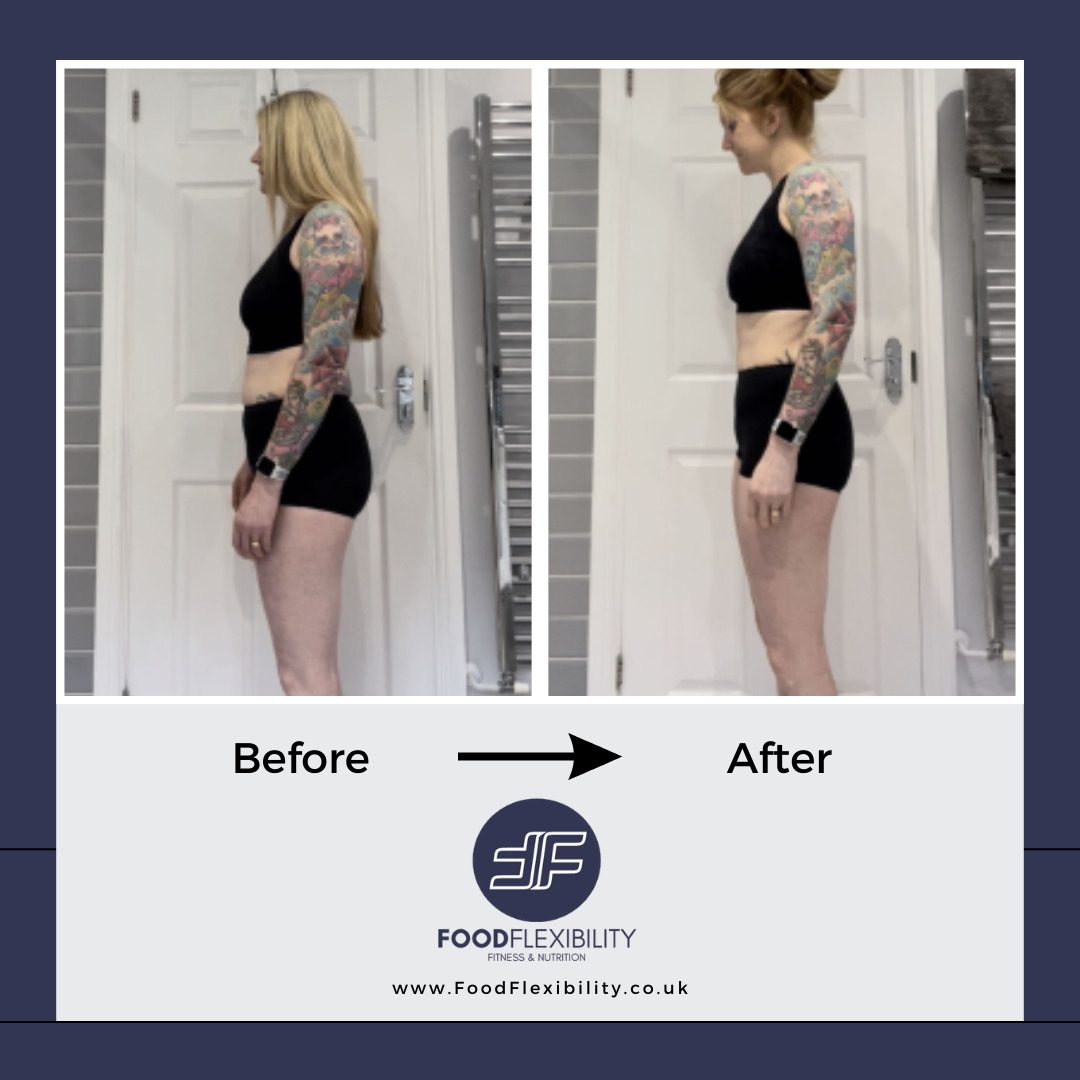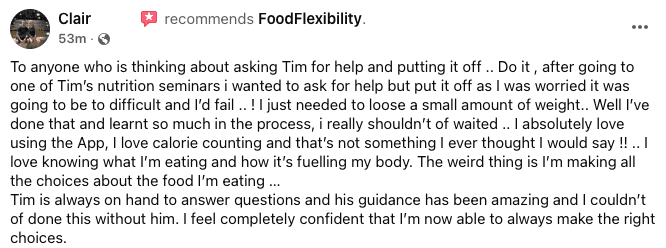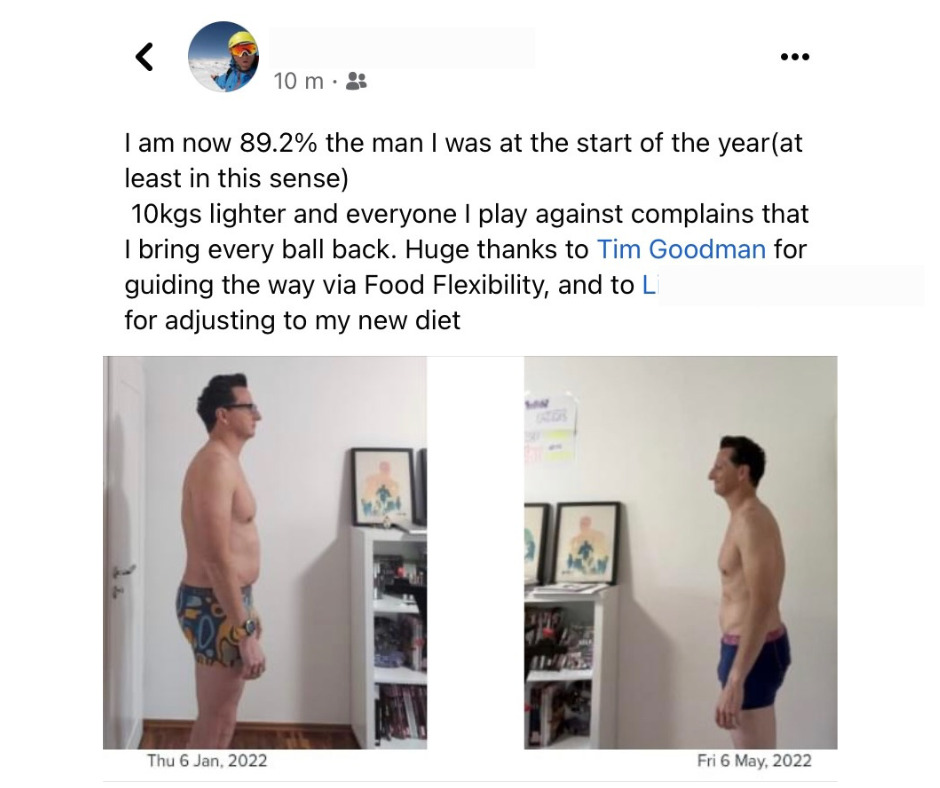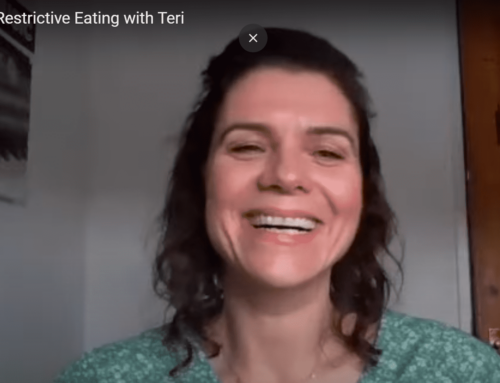Calorie tracking made simple
Calorie tracking can help you to become more aware of the nutrients in the foods you eat and help you match your portions to your goals.
Just like anything new, tracking food can be intimidating.
So, in this article I want to help you become comfortable with calorie tracking. You’ll learn how to simplify the process whilst still getting the full benefits of this powerful learning tool.
Give it a try and not only will you learn more about nutrition, you’ll improve your relationship with food and unlock your progress.
Should you Track Calories?
If you want to understand what you’re eating and align your food choices towards your goals then calorie tracking is a fantastic tool. There are simpler methods but usually the simpler the method the less flexibility you have with food choices.
Should you track calories for weight loss?
Tracking calories can be an effective and sustainable way to lose weight as it gives a flexible approach that doesn’t require over restriction of certain foods whilst allowing freedom to include some of your favourite foods, like ice cream, cake, crisps or pizza. All in the right moderation of course!
Should you track calories for performance?
Whilst it may not be immediately obvious tracking calories can be really helpful if your goal is performance.
Some people with a really high energy output and low appetite end up under eating. As adequate calories are the cornerstone of performance, tracking them (at least temporarily) can ensure you’re eating enough to support your goal.
Why Calorie Tracking is Beneficial
1. It’s an educational tool
Tracking your food intake is an incredibly valuable learning tool.
Whilst many of my online nutrition clients can be a bit wary of it to begin with I encourage all of them to try it for at least 7 days.
By tracking your food, you become aware of the nutrients in the foods you consume and you learn the amounts of foods to eat to help you move towards your goals.
2. Calorie tracking can improve your relationship with food
How often do people feel like they’ve broken their diet by having a Mars bar (other brands are available) or a couple of squares of chocolate?
Let’s say you make most of your meals look like this:


As I recommend in my article about controlling calories without tracking them.
Would you feel as if you’d ‘fallen off the wagon’ if you followed either of the meals above with a couple of bananas or an extra chicken breast?
Probably not.
But those things all have similar calories:
| Banana | Mars Bar | Chicken Breast (cooked) | |
|---|---|---|---|
| Portion Size | 2 medium | 1 bar | 150g |
| Calories | 210 | 230 | 248 |
| Protein (g) | 3 | 35 | 47 |
| Carbohydrate (g) | 54 | 2 | 0 |
| Fat (g) | 1 | 9 | 5 |
Obviously the amount of nutrition is different but that’s where the education element of food tracking comes into play. You can see that the banana is low fat high carb, the chicken is pretty much all protein and the mars bar is a mixture of carbs and fat.
With the right moderation, your diet can be calorie appropriate, nourishing and include a mars bar. Obviously plants, lean sources of protein and less refined foods should form the majority of your diet as they give the most nourishment. But you know that already…
My argument is that by including the odd Mars bar (or any of your favourite foods) you end up with a much better long term strategy than relying on excluding foods you like through willpower alone (which always runs out).
Step-by-Step Guide to Simple Calorie Tracking
So how do you make calorie tracking simple and effective?
Here’s the step by step process I use with all of my online nutrition clients wether their goal is weight loss or performance.
Clarify your goal – and make it realistic!
When calorie tracking for fat loss most people end up setting a very aggressive goal. They understandably aim for the fastest rate possible to get the process over and done with quickly. Whilst technically that will speed up progress, the bigger the calorie deficit the harder the diet is to stick to.
Sustainable fat loss requires a calorie deficit of roughly 20% which will lead to an average weight loss of 0.5-1% of your bodyweight per week.
That’s roughly 1-2lbs per week, which might not sound much but quickly adds up to 26-52 lbs over a year!
Aggressive calorie deficits (larger than 20%) are the number one reason for yo-yo dieting, in my experience, because they just aren’t sustainable long term.
Performance, health or muscle muscle gain all require you to eat around the same calories (maintenance) than you expend each day. Or if you want to push a bit harder then a slight surplus (+10%) may be beneficial.
Rates of muscle growth are 4x slower than fat loss (0.5-1kg per month for males and roughly 70% of that rate for females).
| Fat Loss | Muscle Gain | |
|---|---|---|
| Female | 1-2lbs/week | 0.7-1.4lbs/month |
| Male | 1-2lbs/week | 1-2lbs/month |
Note: if you’re already lean (not overweight/obese) then fat loss rates are slower (0.25-0.5lbs/week). Likewise, more experienced trainees can expect slower rates of muscle gain (0.35-1lb/month).
To get a personalised calorie target for fat loss, performance/muscle gain or overall health then check out the Awesome Supplements Calorie Calculator.
Use a simple, reliable calorie tracking app
My next tip for calorie tracking is to use simple tools.
I use the MyNetDiary calorie tracking app with all my online nutrition clients.
MyNetDiary is simple to use, accurate (it has a verified food database unlike MyFitnessPal) and it gives a visual portion guide making it easier to track calories whilst eating out.
Build your own meal plan
When it comes to deciding what to eat, having too many options can create overwhelm.
You probably eat a small number of meals and snacks on rotation. Rather than tracking them each time you make the meal it can be helpful to save them in your calorie tracking app.
Here’s how to save a meal in the MyNetDiary app.
Do this for a few of your favourite meals and build it over time and you’ll soon have your very own calorie appropriate meal plan.
Enter the right portions in your calorie tracking app
Wherever possible, weigh your food in its raw or uncooked state and track it as such. For example ‘180g raw chicken breast’.
Whilst it can be a pain, weigh and measure as much as you can when you begin calorie tracking. After a while you’ll be able to guess portion sizes a little bit more but you’ll need to develop that skill first.
Of course, if something comes in a packet then you can check out the calorie or serving size information listed.
If you’re out and about then nobody is expecting you to carry around a set of scales which is why MyNetDiary allows you to estimate portion sizes using a visual portion guide.
Effective diets work by controlling calories
Any effective diet controls calories to some degree. You don’t have to track calories but they do need to be controlled.
- Fat loss requires you to consume fewer calories than you burn.
- Performance is optimised when you consume enough (or slightly more) calories than you expend.
The simple act of stopping to think before you put something in your mouth also provides you with a ‘circuit break’. You’re forced to stop and think ‘do I really need this?’.
Emma Storey Gordon describes that nicely here:
Of course, you can make that same circuit break by writing down your meals in a notepad, or taking a photograph but a calorie total gives a more objective picture, in my view.
Take my client Clair, she was working hard in the gym eating really healthily but not seeing the results her efforts deserved.
Until she tried calorie tracking:


The same goes for my client James who lost fat and improved his performance on the tennis court with the help of calorie tracking:

Avoid overcomplicating your calorie tracking
Calorie tracking is not accurate and that is actually a good thing.
After all, the meal you attempt to track is always going to be more accurate than the meal you don’t track at all!
Too many people use ‘perfectionism’ as a reason to abandon calorie tracking.
They worry that if they can’t tell exactly how many calories are in a meal that’s cooked by someone else then it won’t work.
But the reality is that your calorie target is an educated best guess and calorie labelling has a 20% inaccuracy.
So just taking your best, educated guess is going to be good enough provided that you’re consistently tracking and adjusting based on your progress (more on that later).
Calorie tracking is a skill that takes time to learn. Just like a child learning to walk, ride a bike or read it takes practice and you make mistakes along the way. It’s all part of the learning curve.
Don’t panic if you go over your calorie target
Your weekly average calories are more important than any individual day. Use that to your advantage. If you’re 500 calories over target one day then you can eat 100 calories less for the following 5 days and still end up in a calorie deficit.
Remember a calorie deficit should be around 20% so if you go over your calories by 20% then you’ve effectively just pressed ‘pause’ for that day/week.
Don’t track vegetables, unless it’s a potato
I use this ‘rule’ with all my nutrition clients. Basically I ask them not to track any vegetables unless it’s a potato.
Whilst non-starchy veg like broccoli, lettuce etc. do contain calories they are fairly negligible. This has a couple of benefits:
- It prioritises eating as much veg as possible – great for health and reducing hunger
- It reduces the amount of items you track – I always joke that it burns more calories tracking a quarter of a red onion than it does eating it
Calorie tracking is a test and learn feedback loop
Any calorie target is an educated best guess. You set a target, you hit it as consistently as possible for 4 weeks and then you measure the output.
If the output is positive:
- You’ve lost weight or cm’s (if your goal is fat loss)
- You’ve added weight or improved your performance (if that’s your goal)
Then your calorie tracking is working.
If you see progress, don’t get distracted by wanting it to be faster. Keep going, progress will always be slower than you think.
If you’ve been consistent (be honest with yourself) for 4 solid weeks and your progress is behind the rates explained earlier then consider the following in this order:
- Were you really consistent (be honest with yourself here)
- Have you weighed and measured 80% of your food accurately
- If so, make a small (100-150 cal reduction/increase)
The Benefits of Simple Calorie Tracking
Like anything in life, keeping it simple and staying consistent are the keys to successful calorie tracking.
Do that and you’ll understand how to nourish your body with foods you enjoy whilst ensuring you optimise your progress and improve your relationship with food.
Just remember to start things small, keep it simple and cut yourself a break when you struggle because you’re just learning a new skill.
Give Simple Calorie Tracking a Try
Now you’ve read this article you should have a firm grasp on the ways to make calorie tracking as simple as possible.
If you’re still a little unsure, here’s the deal
- download the MyNetDiary app
- track your meal
- post a photo and a screenshot of your tracking to your social media (tagging @foodflexibility)
- I’ll give you my feedback to help you learn
Of course, if you want to work with me 1:1 and get results like Clair or James then click here. Whether you’re on a path to perform as best you can or just want to move well in your daily life, then I’ll help you to achieve the goals you need.
Thanks for reading
Tim




Comments are closed.